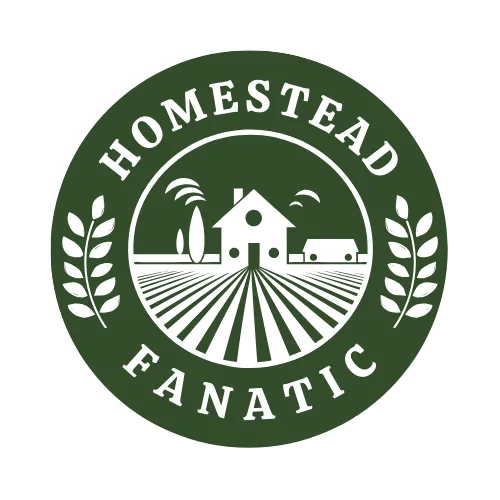
HOMESTEAD FANATIC BLOG
Discover amazing destinations, plan your perfect trip, and book unforgettable experiences. Our travel website makes traveling around the world easy, enjoyable, and hassle-free.
EXPLORE GREAT PLACES
THE HOMESTEAD BLOG

How to Store Food for Long-Term Survival: The Best Methods
Introduction
In uncertain times, having a well-stocked food supply can mean the difference between security and hardship. Long-term food storage is essential for preppers, homesteaders, and anyone looking to build a reliable emergency food reserve. Whether you're preparing for natural disasters, economic downturns, or unforeseen emergencies, learning the best methods for storing food will help ensure your family’s survival.
Why Long-Term Food Storage Matters
Prepping isn't just about survival; it's about peace of mind. Food shortages, power outages, and supply chain disruptions can happen anytime. A solid food storage plan ensures that you and your loved ones will have access to essential nutrition no matter what happens.
Best Methods for Long-Term Food Storage
1. Choose the Right Foods for Storage
Not all foods are suitable for long-term storage. The best options include:
Grains: Rice, wheat, oats, and pasta have long shelf lives when stored properly.
Legumes: Dried beans, lentils, and chickpeas are packed with protein and fiber.
Freeze-Dried and Dehydrated Foods: These retain most nutrients and last for years.
Canned Goods: Meat, vegetables, and fruits provide essential nutrients and require no refrigeration.
Powdered Dairy and Eggs: A good source of protein and calcium with long shelf lives.
2. Proper Storage Containers
Using the right storage containers can significantly extend shelf life. Consider these options:
Mylar Bags with Oxygen Absorbers: Perfect for grains, beans, and powdered foods to keep moisture and pests out.
Food-Grade Buckets: Ideal for bulk storage of grains and dry foods.
Vacuum-Sealed Bags: Help prevent air exposure and extend freshness.
Glass Jars: Great for preserving dried goods and home-canned foods.
3. Store in a Cool, Dark, and Dry Place
Temperature, light, and humidity are the enemies of food storage. Aim to store food in a location that meets these conditions:
Temperature: Keep storage areas between 50°F and 70°F to prevent spoilage.
Darkness: Light can break down nutrients in food, so store in opaque containers or a dark pantry.
Low Humidity: Moisture promotes mold and bacterial growth; using silica packets or dehumidifiers can help.
4. Rotate Your Stockpile
The First In, First Out (FIFO) method ensures that food is used before it expires. Label storage containers with dates and periodically check your inventory to prevent waste.
5. Preserve Food at Home
For those who grow their own food, preserving is an excellent way to extend shelf life. Consider these methods:
Canning: Pressure canning meats and vegetables for long-term storage.
Dehydrating: Removing moisture extends shelf life and makes food lightweight for portability.
Fermenting: Natural preservation method that enhances gut health.
Freezing: While not ideal for off-grid survival, freezing can be useful for short-term storage.
Prepping and Long-Term Food Storage
A well-prepared prepper knows that food storage is only one part of survival planning. Along with stockpiling food, consider these additional prepping steps:
Have a Water Storage Plan: Water is just as essential as food, so store enough for drinking and cooking.
Stockpile Essential Cooking Supplies: A portable stove, fire-starting tools, and non-electric cooking methods are crucial.
Build a Sustainable Food Source: Gardening, raising livestock, and foraging provide fresh food even in long-term crises.
Have a Bug-Out Bag Ready: If you need to evacuate quickly, having a portable supply of food and essentials can make all the difference.
Additional Tips for Preppers
Don’t Rely on Just One Storage Method: Diversify with canned, dried, and frozen foods.
Test Your Food Storage Plan: Cook meals using only stored food to identify gaps in your preps.
Keep Emergency Foods Accessible: Have a smaller, easily accessible supply for immediate needs in a crisis.
Stay Informed and Keep Learning: The prepping community is always discovering new techniques and improvements for long-term food storage.
Conclusion
Long-term food storage is a crucial part of prepping and self-sufficiency. By choosing the right foods, storing them properly, and maintaining a rotation system, you can build a food supply that will sustain you through any emergency. Remember, prepping isn't about fear—it's about readiness, security, and peace of mind. Start small, stay consistent, and ensure your family is prepared for whatever the future holds.

POPULAR QUESTIONS
Asked Questions ?
Many people interested in homesteading ask about how to get started, what animals and crops are best for beginners, and ways to generate income from their land. Food preservation techniques are also a common topic, as self-sufficiency plays a key role in homesteading success. These FAQs provide a helpful starting point for anyone looking to embrace a more independent and sustainable lifestyle.
What is homesteading?
Homesteading is a lifestyle focused on self-sufficiency, which often includes growing your own food, raising livestock, preserving food, and using sustainable practices to reduce reliance on modern systems.
How do I start homesteading with little or no land?
Even if you don’t have a large property, you can start small by container gardening, keeping backyard chickens (if permitted), composting, and learning essential skills like food preservation and DIY projects.
What animals are best for a beginner homesteader?
Chickens, rabbits, and ducks are great starter livestock. They require less space, are relatively easy to care for, and provide eggs or meat while helping with pest control.
How can I make money from homesteading?
Many homesteaders generate income by selling eggs, honey, homemade goods, fresh produce, handmade crafts, or even offering homestead-related workshops.
What are the best crops for beginner homesteaders?
Easy-to-grow crops include tomatoes, zucchini, lettuce, radishes, and herbs like basil and mint. These require minimal maintenance and provide a great starting point for new homesteaders.
How do I preserve food for long-term storage?
Canning, dehydrating, freezing, and fermenting are all effective ways to preserve food. Each method has its benefits, depending on the type of food and your available storage space.

Your Gateway to Global Adventures Await Here.
Quick Links
Home
About Us
Services
Blog
Quick Links
Email:
